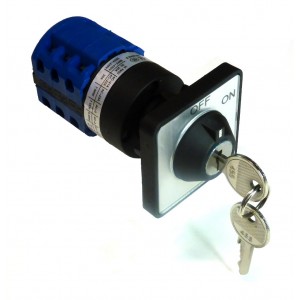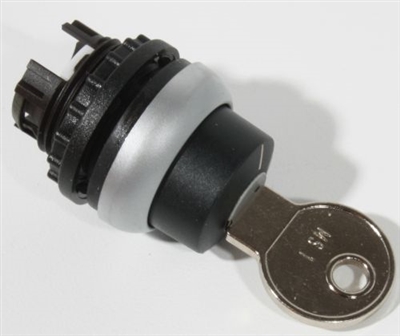

Stronger springs require more actuation force, resulting in “harder” more forceful typing. Spring: the metal spring inside each mechanical key that offers resistance, depressing as it’s pressed and returning the key up as it’s released. Scissor switches are technically mechanical in operation, but usually aren’t implied when talking about mechanical keyboards, as they lack a spring action and don’t support custom keycaps. Scissor switch: a low-profile switch design often used in laptop keyboards that uses plastic or metal hinges to support the key. Most inexpensive keyboards use this switch design. Rubber dome: a standard non-mechanical keyboard design that uses a sheet of rubber to cover electrical switches, which are then activated when the key is depressed. The square stem is incompatible with most keycaps. Romer-G: A Logitech key and stem design with a fast actuation. Very popular for “gaming” mechanical keyboards.

Blue: tactile switch with “clicky” audio feedback and a strong 50g actuation.Black: linear switch with no click and a strong 60g activation.Key manufacturers use different color codes for their various switches, but most roughly follow the Cherry style of color coordination: Key switch colors: similar key switches are offered in different “colors,” with each color corresponding to different aspects of the switch design itself: clicky versus non-clicky, tactile versus linear, and different actuation forces. Topre is the most common electrostatic switch, and similar designs are often called “Topre clones” and “Topre-like.” Electrostatic capacitive switches produce a distinctive “thonk” feeling when pressed, and are available in different spring strengths and with different key stems. Switch designs without this extra audible feedback are described as “non-clicky.”Įlectrostatic capacitive switch: an alternative “semi-mechanical” switch that uses a rubber or plastic dome over a spiral-shaped spring that rests directly on the keyboard’s circuit board. Not to be confused with tactile switches some switches are both “clicky” and “tactile,” but not all tactile switches are clicky. Many companies have copied the Cherry switch design and use the same cross-shaped stem to make keyboards and keycaps interchangeable.Ĭlicky: the audible “click” sound made from a switch. Cherry MX switches are available in different “colors” which correspond to different switch features and resistances.

KEYCLICK SWITCHES PC
Cherry-style switch manufacturers include Gateron, Kailh, and Zeal PC (Zealio).Ĭherry MX switch: the de facto standard key switch type for modern mechanical keyboards, developed by German company Cherry in the 1980s. Buckling spring switches inspired modern key switch designs, but are not actually used on most keyboards, except the legacy models still sold by Unicomp.Ĭherry clone: a switch designed to match the Cherry MX style, but manufactured by another company.
KEYCLICK SWITCHES FULL
Rubber dome keys usually require a full bottom out to activate.īuckling spring switch: a relatively simple and old-fashioned spring switch first designed by IBM, and made famous by the Model M keyboard. Mechanical keys actuate before bottoming out, meaning it’s possible to type faster and with less force (though some heavy typists still do so). Alps uses a rectangular stem incompatible with other keycaps.īottom out: the act of pressing a key to its full depth. Like the more popular Cherry MX switches, many different actuation and tactility options are available in Alps style, and many “Alps-like” and “Alps-clone” switches have been made. Heavier switches take more force to press down.Īlps switch: an alternative switch style that dates back to the 1980s. Different key switch designs allow for different levels of actuation force, measured in grams. Actuation force: the amount of pressure needed to depress a key and register a keypress.


 0 kommentar(er)
0 kommentar(er)
